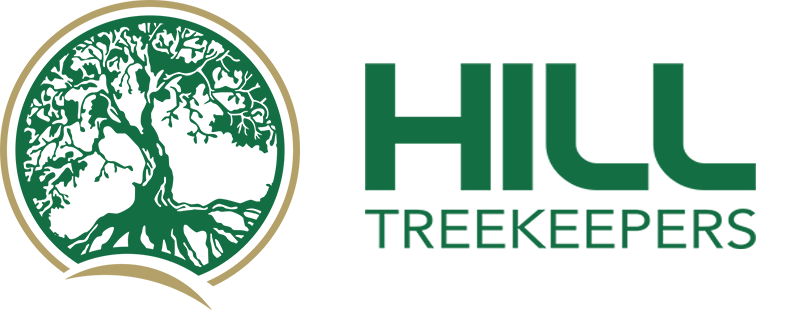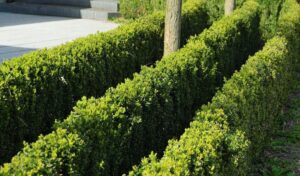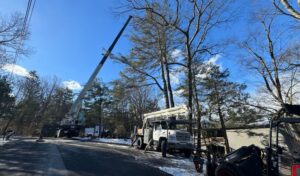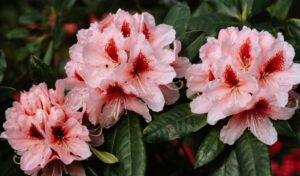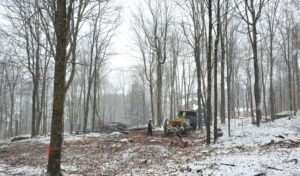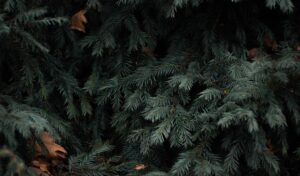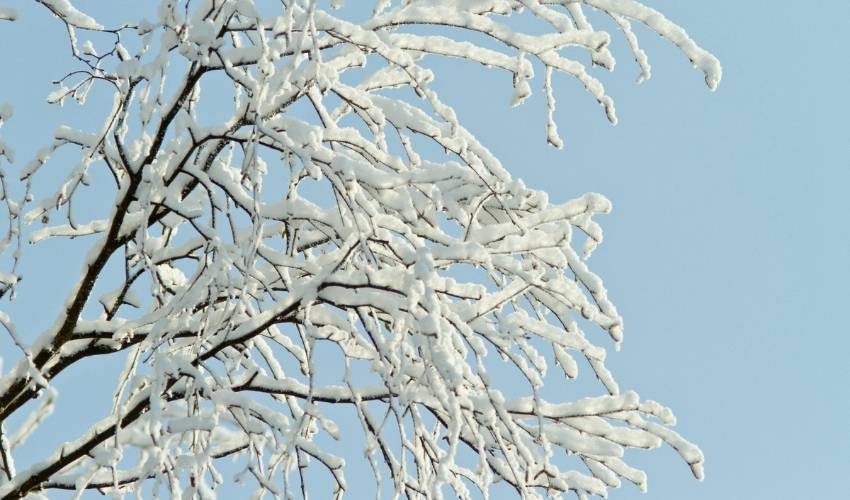
Are you ready to give your trees the care they need this autumn? Look no further than our Hudson Valley, New York Fall tree care checklist.
With this checklist, you’ll ensure that your trees stay healthy and vibrant throughout the autumn and winter months. Continue reading for fall tree care tips, with information on:
- Pruning
- Moisture Retention
- Pest and Disease Prevention
Fall Tree Care – Key Takeaways
- Pruning during autumn promotes healthy growth, air circulation, and new growth.
- Mulching insulates trees, retains moisture, and improves soil structure.
- Protecting against pests and diseases maintains tree health.
- Winter preparation ensures survival and health during cold months.
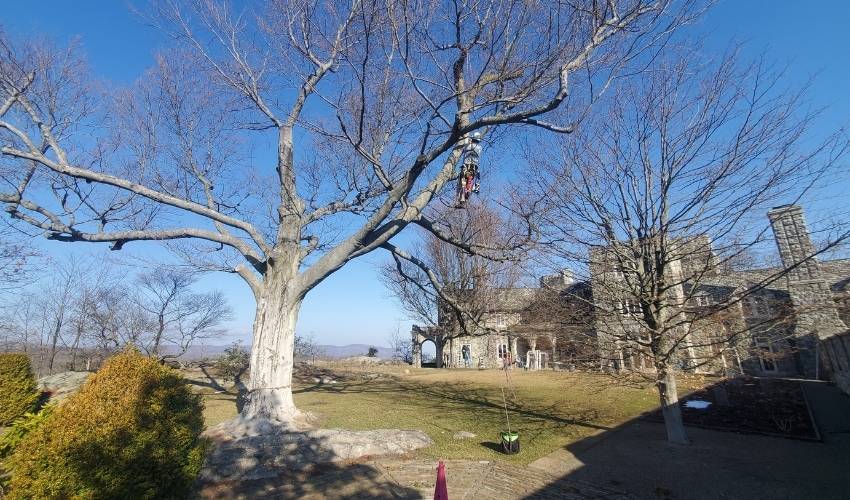
Pruning trees into the fall and winter has numerous advantages for keeping a tree healthy and disease free while preparing them for new spring growth.
Pruning for Healthy Growth
According to the New York State Department of Environmental Conservation, you should prune your trees in the Hudson Valley during autumn to promote healthy growth. Pruning is an essential part of fall tree care as it helps remove dead or diseased branches, improves air circulation, and stimulates new growth.
You should start by inspecting your trees for any dead, broken, or crossing branches that may pose a risk. Using clean and sharp pruning tools, make clean cuts just outside the branch collar, ensuring the tree’s natural healing process can occur smoothly.
When pruning, remember to maintain a balanced canopy by removing any branches that are too dense or overcrowded. This will allow sunlight to reach the inner branches, promoting overall tree health. Additionally, thinning out the canopy can also reduce the risk of wind damage during the harsh winter months.
While pruning, keep in mind that certain tree species have specific needs. For example, some trees, like fruit-bearing ones, require specialized pruning techniques to maximize fruit production. It is always a good idea to consult a professional arborist who can provide guidance based on your specific tree types and their unique requirements.
By following these pruning guidelines, you can ensure your trees in the Hudson Valley have a healthy start to the next growing season. Remember, pruning is best done during the dormant season, so autumn is the perfect time to give your trees the care they need.
Fall Watering and Mulching for Moisture Retention
Watering
Keeping your soil hydrated though the winter is a crucial step to ensure your trees stay healthy through the season. Continue to water your trees into the fall as long as the ground isn’t frozen. For example, many tree owners water their trees through November. Watering beyond the warm summer months gives your tree’s roots the moisture they need to thrive through the dormant season. But watering alone isn’t always enough.
Mulching
Mulching helps to insulate trees and retain moisture. By applying a layer of mulch around the base of your trees, you can provide them with a protective barrier against extreme temperatures and fluctuations in weather conditions.
Additionally, mulch helps to conserve moisture by reducing evaporation from the soil surface, ensuring that your trees receive an adequate water supply even during dry spells.
Here are three important tips for mulching your trees in the Hudson Valley during autumn:
- Choose the right mulch: Opt for organic materials such as wood chips, shredded bark, or compost. These materials break down over time, adding nutrients to the soil and improving its structure.
- Apply the mulch correctly: Spread a layer of mulch around the base of the tree, extending it out to the drip line (the outermost edge of the tree’s canopy). Make sure the mulch is around 2-4 inches deep, but avoid piling it against the trunk, as this can lead to moisture retention and pest problems.
- Maintain the mulch: Regularly inspect the mulch layer and replenish it as needed. Over time, the mulch may break down or get compacted, so it’s important to add fresh mulch to maintain the desired depth and effectiveness.
By following these watering and mulching tips, you can provide your trees with the insulation and moisture retention they need to thrive during the autumn season in the Hudson Valley.
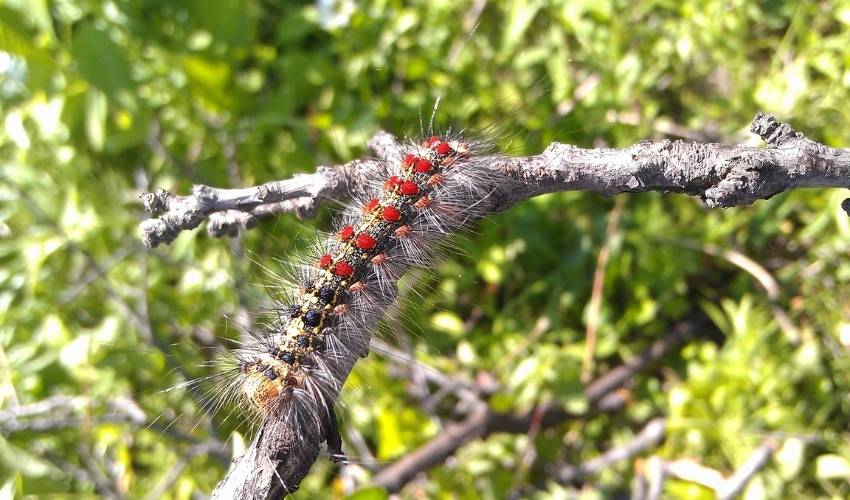
The spongy moth (formerly known as the gypsy moth) is a common pest species that would love to feast on your foliage.
Protecting Against Pests and Diseases
Protecting against pests and diseases is crucial for maintaining the health of your trees in the Hudson Valley. The autumn season brings a variety of pests and diseases that can harm your trees if not properly addressed.
One common pest to look out for is the spongy moth (formerly known as the gypsy moth). These voracious eaters can defoliate an entire tree if left unchecked. To protect against gypsy moths, inspect your trees regularly and remove any egg masses you find.
Another common pest is the invasive emerald ash borer, which attacks ash trees and can quickly kill them. If you have ash trees on your property, consider getting them inspected by a certified arborist and if they’re healthy, have them treated with a preventative pesticide to prevent future infestation.
In addition to pests, diseases can also pose a threat to your trees. One such disease is oak decline, which is a condition brought on by a host of factors, sending oak trees into rapid decline and even death.
It’s also important to maintain good overall tree health, as healthy trees are better able to resist pests and diseases. By taking these steps, you can help protect your trees and ensure their longevity in the Hudson Valley.
Got Fruit Trees?
Check out this article on using dormant oil sprays to protect your fruit trees and orchards against pests!
The Importance of Preparing Trees for Winter
Preparing your trees for winter is essential for their survival and health during the cold months. As the temperatures drop and the days become shorter, it’s important to take the necessary steps to ensure your trees are well-prepared for the harsh winter conditions in the Hudson Valley.
By following the steps outlined in this article, you can ensure that your trees are well-prepared for winter. Taking the time to care for your trees now will pay off in the spring when they begin to leaf out come spring.
Fall Tree Care – Frequently Asked Questions
Can I prune my trees in the fall, or should I wait until spring?
You can prune your trees in the fall. It’s actually a good time to do it because the trees are dormant, and it helps promote healthy growth in the spring. Keep in mind though that trees can be pruned any time of year.
How often should I mulch my trees during the autumn season?
During the autumn season, you should aim to mulch your trees once. Applying a layer of 2-4 inches of mulch around the base of the trees will help conserve moisture, regulate soil temperature, and suppress weed growth.
What are some common pests and diseases that affect trees in the Hudson Valley region?
Common pests and diseases in the Hudson Valley area include emerald ash borer, Asian longhorn beetle, spongy moth, Dutch elm disease, oak decline, and apple scab. Regular inspections and prompt treatment are crucial to maintain the health of your trees.
Are there any specific tree species that require extra protection during the winter months?
Some tree species, such as evergreens and young trees, require extra protection during winter months in the Hudson Valley. Wrapping trunks with burlap and mulching around the base can help prevent damage from freezing temperatures and harsh winds.
Is it necessary to remove any dead or damaged branches before winter sets in?
Yes, it is necessary to remove any dead or damaged branches before winter. This helps prevent them from falling and causing damage during winter storms and promotes healthy growth in the spring.
Want to know more about how winter weather will affect your trees? Check out our winter tree care checklist here.
Fall Tree Care – Final Thoughts
Taking care of your trees in the Hudson Valley during autumn is essential for their health and survival. Through pruning, ensuring proper hydration, and protecting your trees from pests and diseases, you encourage healthy growth and prevent any potential damage.
It pays off to prepare your trees for winter and help them withstand the harsh conditions!
Need Help Getting Your Trees Autumn Ready?
Call Hill Treekeepers today at 914-214-7045. Our certified arborists can assess your Hudson Valley trees and keep them thriving through the fall and all year long! Proudly serving Ulster, Orange, and Dutchess Counties, our expertise and experience is beyond compare. See why we’re the top choice for tree care in the Hudson Valley.
Share this online!
Get the highest quality of tree services for residential and commercial properties in the Hudson Valley area. We look forward to working with you!
TOPICS
Recent Articles
Don't Miss the Next Update!
Join the thousands of smart Hudson Valley residents who get the monthly newsletter from Hill Treekeepers. It's full of helpful information you won't want to miss!
